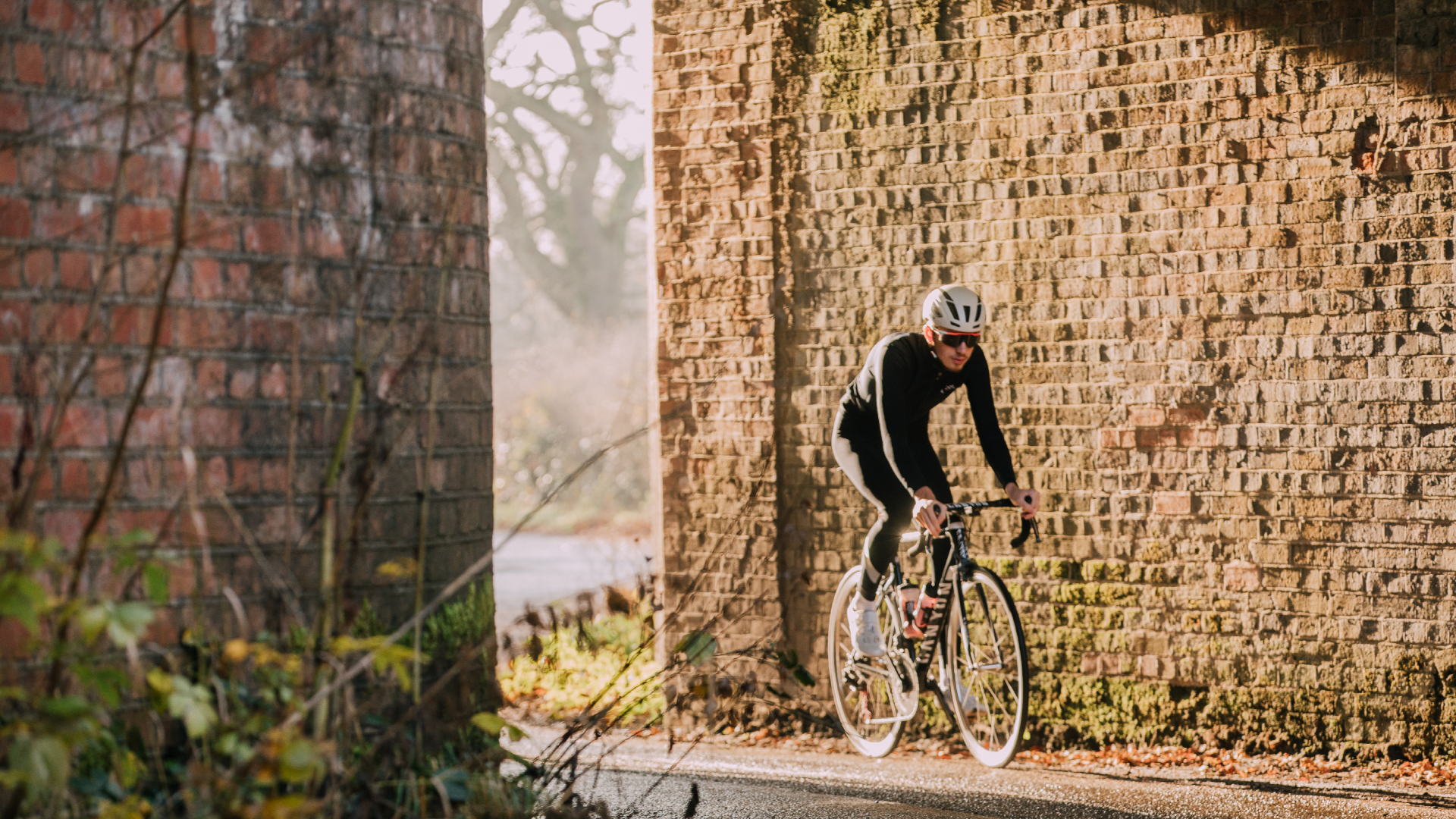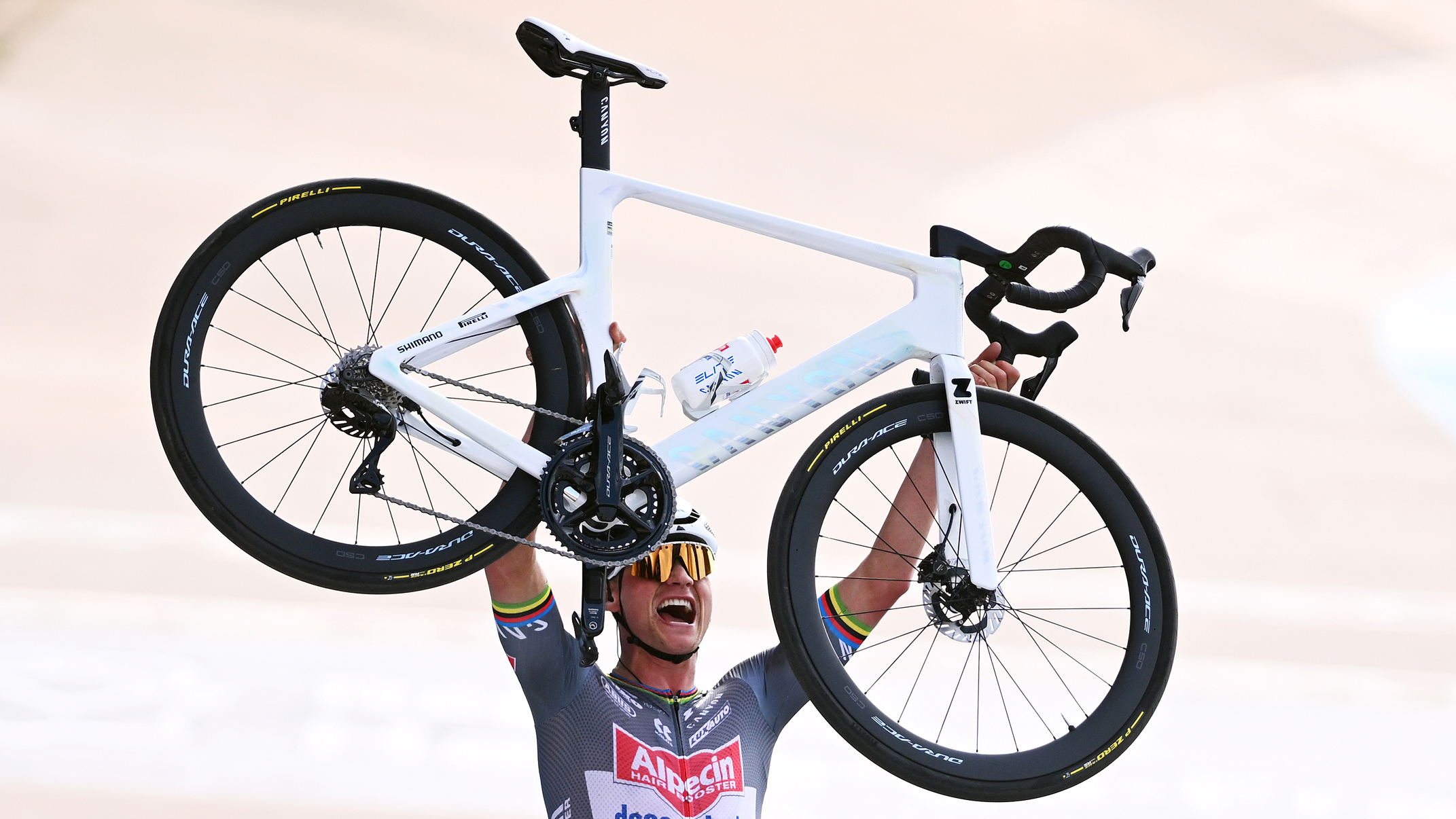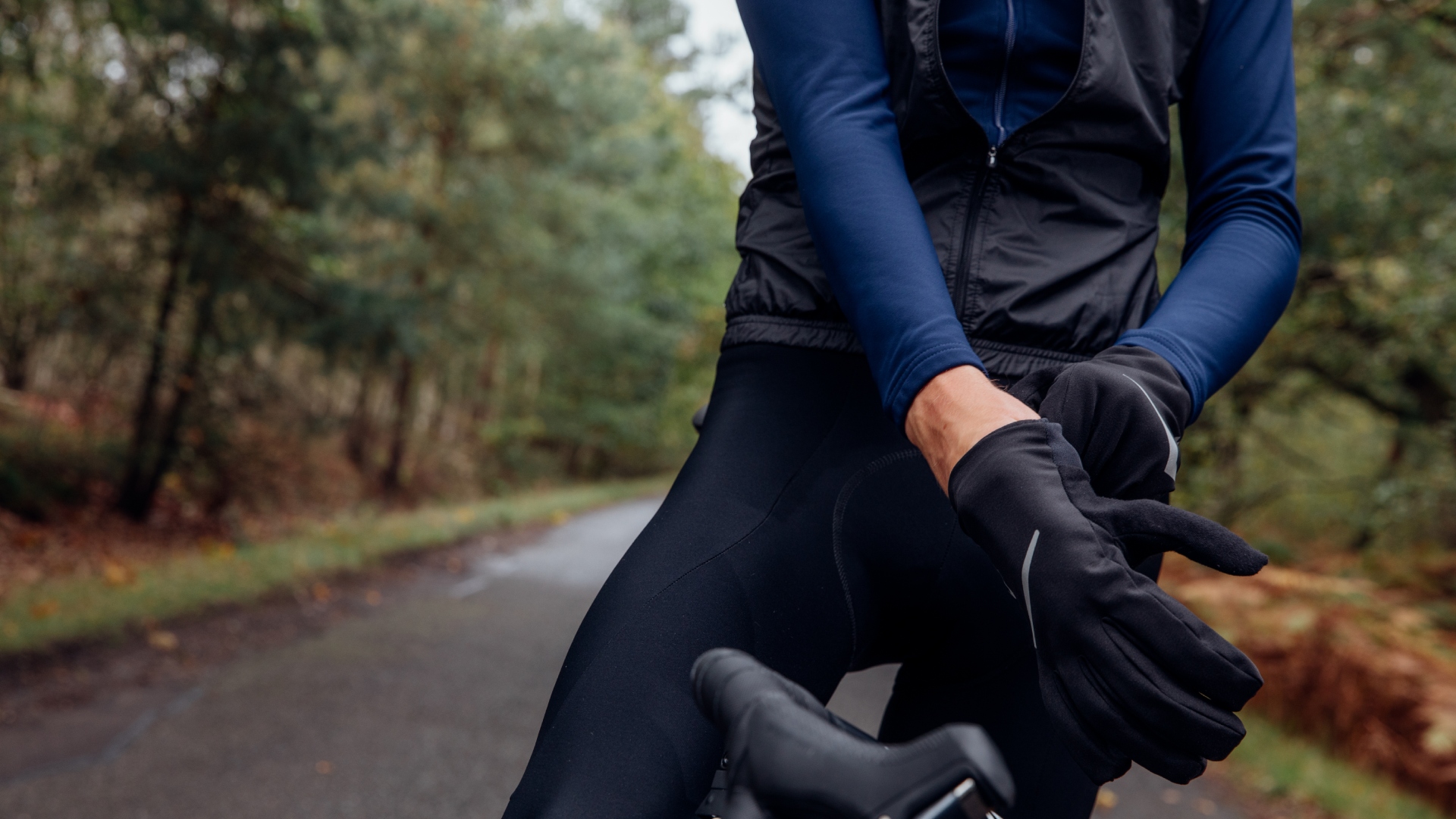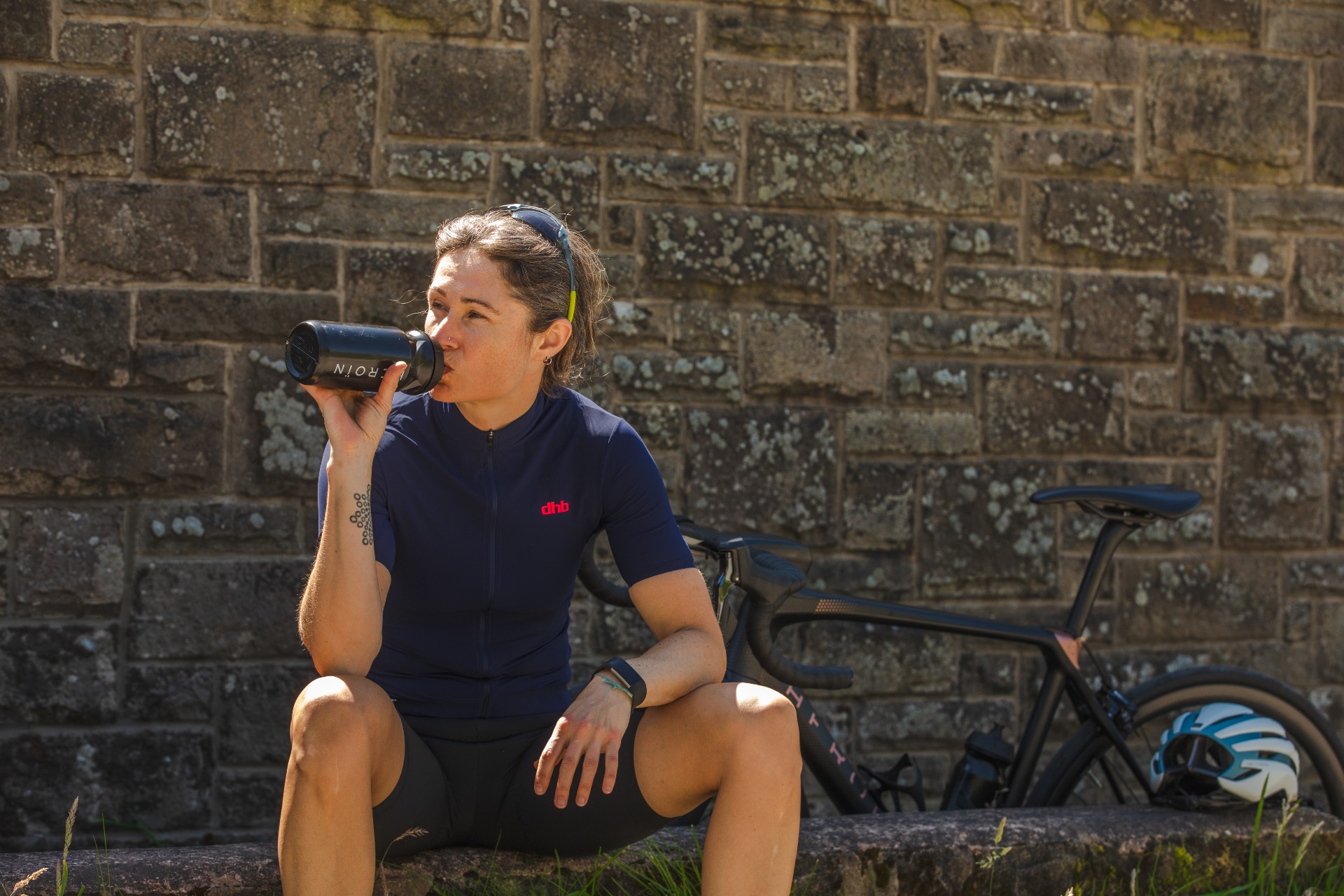Why is everyone talking about Zone 2 training? Tadej Pogačar, or rather his coach, is responsible - here’s why
The cacophony of praise for Zone 2 training of late left Chris Sidwells scratching his head. So he decided to find out what all the fuss was about


Why is everyone banging on about Zone 2 training? That’s the question I’ve found myself asking repeatedly during the last year. It’s not as though the benefits of training at a low to moderate intensity are a new discovery. Endurance cyclists have been doing their long rides mostly at Zone 2 for years, so why all the attention now?
The reason, so far as I can tell, is Tadej Pogačar, or rather his coach, Iñigo San Millán. In several podcasts in the last year, notably a lengthy and detailed interview with US longevity specialist Dr Peter Attia in his ‘Drive’ podcast, the Basque-born coach claimed that it was this type of training that lay behind Pogačar’s phenomenal success.
A number of fellow coaches and exercise physiologists weighed in to strongly disagree with San Millán. This has stirred up some confusion around the importance of Zone 2 training – confusion that this feature seeks to resolve.
What is Zone 2?

The perplexity around Zone 2 isn’t helped by there being several zone-based training systems, each with different numbers of cycling training zones, from just three to seven or more. They are all based on the same principle of specifying exercise intensity. Different zones represent different exercise intensities, which are defined by heart rate, power output or perceived exertion. In most of these systems, Zone 2 is defined as around 60-75% of FTP or 70-85% of FTP heart rate; more simply, it’s a comfortable pace at which you can chat freely and ride for several hours. The ability to talk is used as a measure for Zone 2 because the top end of the zone is where we meet the ventilatory threshold, a level of effort where we begin to run short of breath – sentences start to be punctuated by gasps.
The ventilatory threshold is the point at which the body switches from using mostly fat as its fuel source to mostly carbohydrate. We use both fuel sources all the time, but the ventilatory threshold is where the proportions change dramatically. As we increase the effort from Zone 2 to Zone 3, we start burning lots more carbs.
Putting specific numbers on Zone 2 requires personalisation, since each individual has slightly different physiology determining where the lines fall. It also requires you to know your threshold benchmarks and be confident they’re up to date and accurate. If we’re going to confer on Zone 2 a special importance, we need to know for sure when we’re in it.
Zone 2 and burning fat

Burning mostly fat is a good thing for endurance performance, not least because the stored supply is vast – even the leanest individual has more than 25,000kcal-worth of stored fat. Riding in Zone 2, the body becomes accustomed to drawing on these reserves, which pushes the ventilatory threshold upwards. The implication is that riders who spend lots of time in Zone 2 gradually become better able to burn fat at higher intensities, sparing their precious carbohydrate stores.
Get The Leadout Newsletter
The latest race content, interviews, features, reviews and expert buying guides, direct to your inbox!
If carbs are spared, more of them are left in the tank for the intense efforts – attacks, breakaways and finishing surges – when they are really needed. As such, elevating your ability to burn fat is crucial for anyone aiming to triumph in long races. This doesn’t depend entirely on Zone 2. Fat oxidation is also trained at higher exercise intensities, but because Zone 2 is less demanding, we can do more of it and reap greater adaptations. In a nutshell, that is why ‘long, slow distance’ has always been the mainstay of training for most endurance athletes.
Long before it was given the name Zone 2 training, long-duration exercise at an easy to steady pace was established as the staple way to improve endurance performance. It was what you focused on over winter: base training or simply ‘getting the miles in’. During the 1970s and 1980s, the ability to monitor lactate concentration in the blood, together with the arrival of heart rate monitors, led to the establishment of training zones. Then again, Zone 2 training may not require such technology. According to San Millán, the traditional method – perceived exertion – is a valid way of measuring Zone 2 intensity, especially the particular way he prescribes it.
Tadej Pogačar's coach explains the scientific benefits

San Millán is head of performance at Team UAE Team Emirates – and he is evidently a very busy man. Aside from his cycling team job, the 52-year-old is an assistant professor at the University of Colorado’s School of Medicine, where he specialises in endocrinology, diabetes, metabolism and cancer. He draws on his human metabolism expertise, specifically the ways in which different energy systems (bioenergetics) fuel different training intensities, in his training of world-class cyclists.
In the now-famous Peter Attia podcast episode, San Millán revealed a nuanced approach to Zone 2 training, repeatedly referring to mitochondria, the part of cells responsible for energy production – he called this specific area of study metabolomics. His central claim was that exercising at the higher end of Zone 2 not only maximally stimulates fat oxidation in mitochondria but also massively boosts their rate of lactate clearance. It’s Tadej Pogačar’s incredible ability to clear lactate, San Millán argued, that makes him such an exceptional athlete.
To back up his suggestion, the physiologist talked about a protein called MCT1, a lactate transporter found mainly in slow-twitch (type 1) muscle fibers – the type doing most of the work during Zone 2 training. According to San Millán, MCT1 clears lactate by transporting it into mitochondria, where it is converted to usable fuel. When carbohydrates are broken down, they are converted to pyruvate, some of which is used by mitochondria to produce energy, as well as lactate and other metabolites. Lactate can be used as fuel, but its accumulation in the blood has been linked to acidosis – a build-up of acidity – and consequent muscular fatigue. Importantly, lactate is not directly responsible for muscles feeling sore or tired – ‘lactate burn’ was debunked years ago – but it is still used as a marker of fatigue.
San Millán explained that increased levels of MCT1 boost the rate at which lactate is removed from blood and transported into mitochondria, where it is converted into pyruvate and used to produce energy. On the podcast, he also said that in his experience a specific type of Zone 2 training – working at the very top end of the zone, just below ventilatory threshold – drastically increases MCT1 concentration around mitochondria. At this upper end of Zone 2, breathing rate increases and it becomes harder to chat freely in full sentences.
But what about other training zones?

In making the case for Zone 2 training on a high-profile platform, San Millán drew criticism from some fellow scientists. One complaint was that he did not sufficiently acknowledge that fat oxidation occurs across a broad range of intensities, not only at Zone 2. For example, a 2020 paper in the Scandinavian Journal of Medicine and Science in Sport found that adding 30-second sprints to an endurance ride – a far cry from classic Zone 2 training – enhances the improvement in fat oxidation derived from the ride.
There’s also growing evidence that mitochondrial function and lactate transport can be developed in ways arguably more effective than hour after hour at Zone 2. Research by David Bishop at his team at Victoria University, Melbourne, has found that, although lower-intensity riding increases mitochondrial density in muscle fibers, higher-intensity riding improves mitochondrial efficiency. On the question of San Millán’s beloved MCT1 transporters, it has been pointed out that another lactate transporter, MCT4, is also critical in the process. And MCT4 is found mostly in type-2 (fast-twitch) muscle fibers, the type activated during more explosive efforts – and less so during Zone 2 riding.
The 80:20 debate Aside from the scientific quibbles, the main objection from the amateur cycling world to San Millán’s paean to Zone 2 was that, while it may work well for pro riders like Pogačar, the rest of us don’t have time for unlimited amounts of low intensity riding. Pogačar’s mix of 80% low intensity (Zone 2 or below) and 20% high intensity is wholly achievable for a full-time athlete, but many coaches who train amateurs with full-time jobs claim that the 80:20 ratio doesn’t work for their clients.
The eminent US coach Hunter Allen told us: “Zone 2 is fine for pro cyclists. If you have five to six hours a day to train, then sure, go for it and follow the 80:20 mix.” It is less realistic, he suggests, for busy amateurs.
“The majority of our clients have one to two hours a day to train. If they spent 80% of their training time in Zone 2, they would never improve the other things, in particular their FTP, which is critical to performance.” He is categorical in this judgement. “In fact,” he adds, “if they did an 80:20 mix, many of them would lose fitness.”
According to Allen, time-crunched riders need to spend a greater proportion of their training time at higher intensities. “Zone 2 works for sure, but you have to have time for it. Riding more at FTP or at what we call sweet spot, just under FTP, is a far more effective way to improve performance for people with less than 15 hours a week to train.”
There is a related point here, which in fairness to San Millán he did point out during the Attia interview: for pro cyclists, because they are so well trained, Zone 2 is a higher level of effort, requiring a much higher power output than it does for most amateurs. Arguably, then, training in Zone 2 has a different effect on elite athletes – they are riding harder and faster at the same level of intensity.
Reverting to hype
Undoubtedly, there has been much ado about Zone 2 since San Millán began extolling its virtues. Partly this is simply because Peter Attia has such a large, influential following. Secondly, Tadej Pogačar is a cycling rock-star – who wouldn’t want to train like him to emulate his jaw-dropping feats? Combine these two factors and it was a recipe for excessive hype around a form of training that was, in reality, as old as the hills.
I’ll leave the last words on Zone 2 to British coach Ruth Eyles, who has clients at all levels and from all walks of life. “When coaches talk about their work with elite athletes, there’s always a danger of their theories being taken out of context.” Eyles has seen hype around certain intensities come and go over the years. “You saw a similar buzz around HIIT [high-intensity interval training] a few years ago.”
In Eyles’s view, Zone 2 hype is just HIIT hype turned on its head. “Zone 2 is good training, and by all means do as much as possible, but not at the expense of training in higher zones. A weekly long ride in Zone 2 will reap most of the benefits you need from it.”
Zone 2 for the time-crunched
Inigo San Millán spoke about his own training during his interview with Peter Attia, revealing his own time-efficient Zone 2 session. He explained how these days, as a busy scientist rather than a competitive rider, he does not periodize his training but just wants to keep fit.
Like many of us, San Millán sets aside 60-90 minutes each day to exercise, and uses the 80:20 ratio to keep things simple. For the first 80% of any ride, he stays in Zone 2, trying to keep to the top end of the zone, where he could have a conversation but his increased breathing rate would be noticeable in his speech. Then for the final 20% of the ride, he pushes the pace so that he is training at higher intensity, aiming to be able to say at the finish: “I really rode hard there today. I’m not exhausted, but it feels good.”
This is a very practical fitness maintenance session but for maximal gains a more polarized approach is required. Alternatively, if you had one hour for your ride, you could simply warm up for five minutes, ride at high Zone 2 for 45 minutes, then ride harder for five minutes. Finish with a five-minute warm-down and bingo, you’ve bagged a good Zone 2 training session.
This full version of this article was published in the print edition of Cycling Weekly. Subscribe online and get the magazine delivered direct to your door every week.

Thank you for reading 20 articles this month* Join now for unlimited access
Enjoy your first month for just £1 / $1 / €1
*Read 5 free articles per month without a subscription

Join now for unlimited access
Try first month for just £1 / $1 / €1

Chris has written thousands of articles for magazines, newspapers and websites throughout the world. He’s written 25 books about all aspects of cycling in multiple editions and translations into at least 25
different languages. He’s currently building his own publishing business with Cycling Legends Books, Cycling Legends Events, cyclinglegends.co.uk, and the Cycling Legends Podcast
-
 How do the pros train? Noemi Rüegg's 26 hour training week
How do the pros train? Noemi Rüegg's 26 hour training weekWinner of this year’s Tour Down Under, the EF Education-Oatly rider is a climber whose talent is taking her to the top
By Chris Marshall-Bell
-
 Save £42 on the same tyres that Mathieu Van de Poel won Paris-Roubaix on, this Easter weekend
Save £42 on the same tyres that Mathieu Van de Poel won Paris-Roubaix on, this Easter weekendDeals Its rare that Pirelli P-Zero Race TLR RS can be found on sale, and certainly not with a whopping 25% discount, grab a pair this weekend before they go...
By Matt Ischt-Barnard
-
 Riding with Raynaud’s: How to beat cold hands and feet over winter
Riding with Raynaud’s: How to beat cold hands and feet over winterSymptoms of Raynaud's syndrome extend far beyond simply having chilly hands and feet, our experts guide you through the how-to on making winter riding bearable despite the disease
By Lexie Williamson
-
 Does riding in the cold always have to slow you down?
Does riding in the cold always have to slow you down?Recent research reveals that starting a ride cold can decimate endurance. James Witts examines how rolling out toasty boosts staying power
By James Witts
-
 Forget 'new year, new me': 31 realistic, bitesized new habits for 2025
Forget 'new year, new me': 31 realistic, bitesized new habits for 2025Small adjustments to your daily routine can have a big impact on your cycling fitness. Lexie Williamson lists 31 good habits, one for each day of January
By Lexie Williamson
-
 'My riding companion proceeded to fragment into countless tiny particles and dissolve into the night sky — I was hallucinating': Inside a 500km ultra ride
'My riding companion proceeded to fragment into countless tiny particles and dissolve into the night sky — I was hallucinating': Inside a 500km ultra rideKeen to test the limits of his well-matured endurance, Steve Shrubsall hurls himself headlong into a 500km ultra-endurance adventure across England's North and South Downs
By Stephen Shrubsall
-
 Hot weather cycling: 6 tips to help you keep your cool
Hot weather cycling: 6 tips to help you keep your coolA spell of hot weather needn't stop you enjoying your riding, as long as you take some precautions to prevent over-heating and dehydration
By Anna Marie Abram
-
 21 ways to get your season off to a flying start
21 ways to get your season off to a flying startMotivation is key: achievable, aspirational goals with clear checkpoints is a great place to start. Structured training, bike servicing and joining a club will all help set you on the right trajectory, too
By Charlie Allenby
-
 Eight-step guide to crafting your achievable goal this year, according to a cycling coach
Eight-step guide to crafting your achievable goal this year, according to a cycling coachHow to come up with a target you can hit - plus some pointers on how to stay on track
By Chris Marshall-Bell
-
 Seven benefits of riding outdoors - which you’ll miss out on if you train inside all winter
Seven benefits of riding outdoors - which you’ll miss out on if you train inside all winterAs with most things in life, there is a balance to be struck…
By Andy Turner